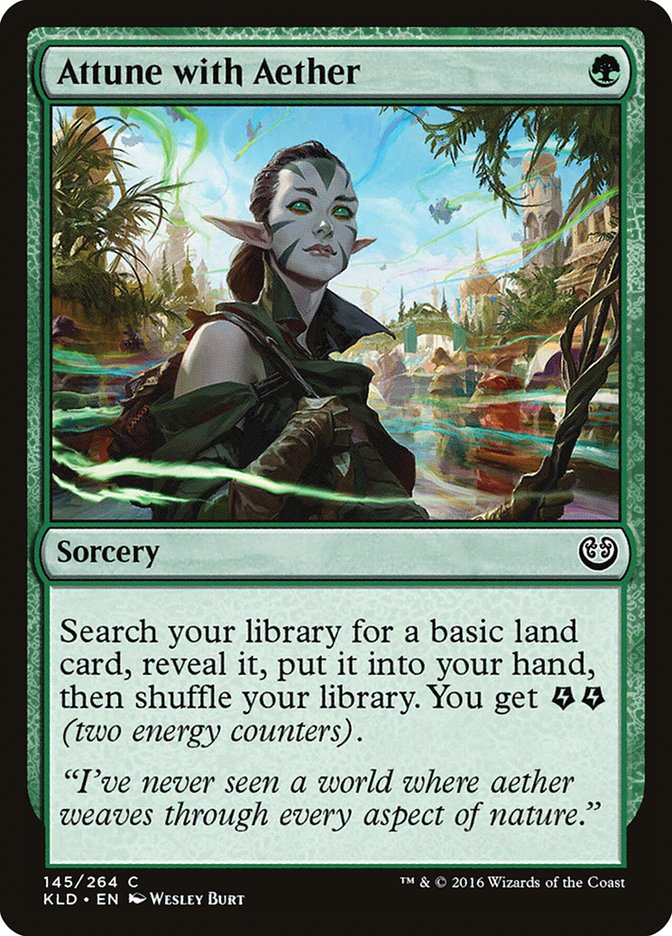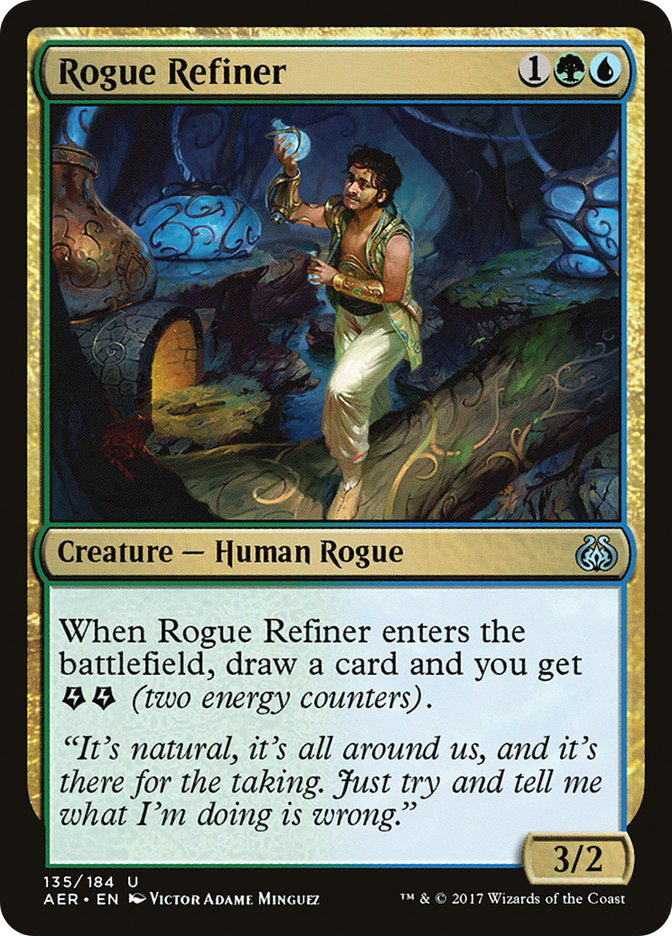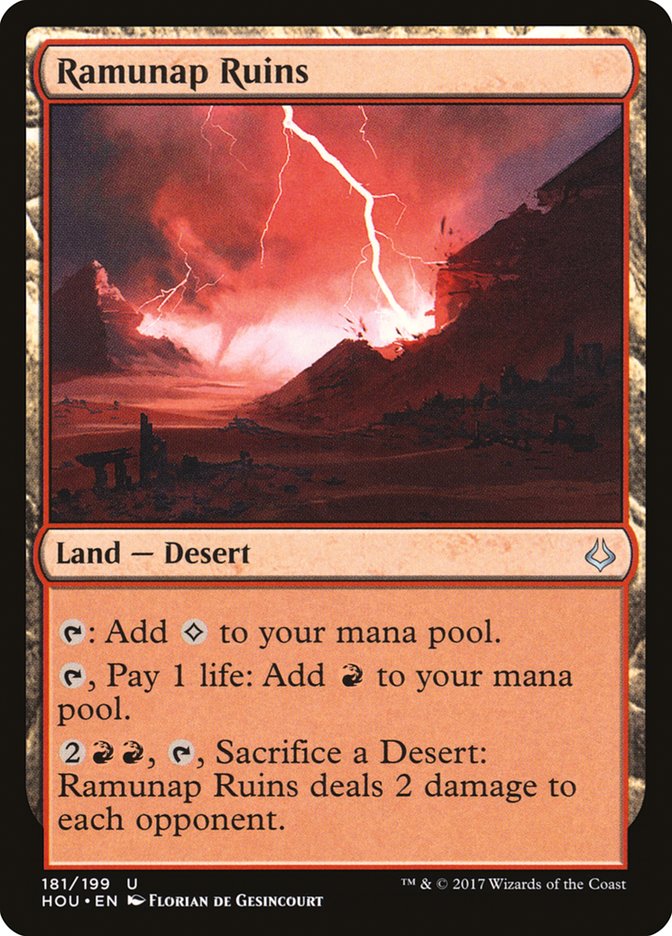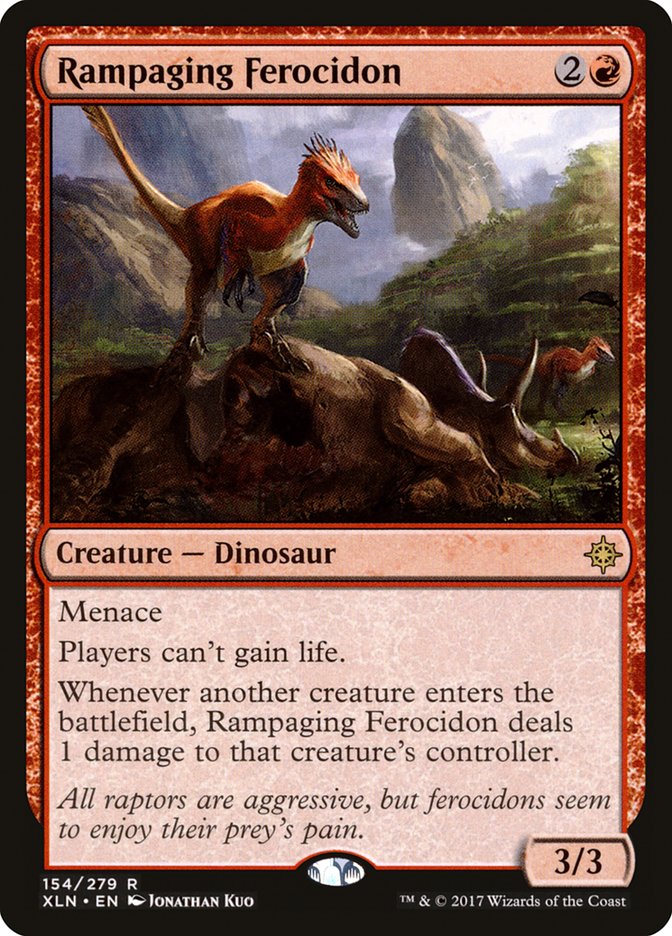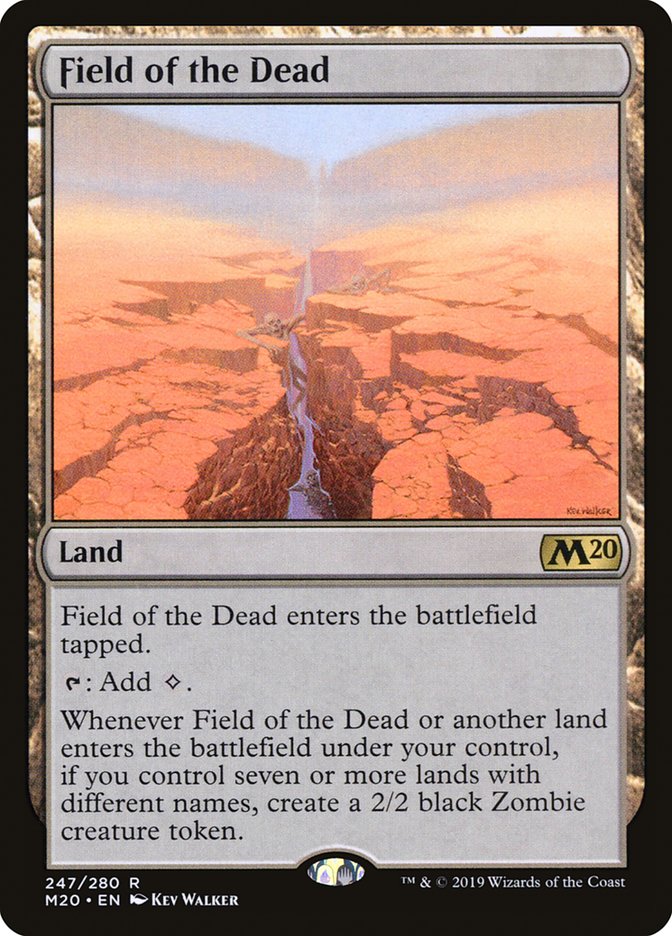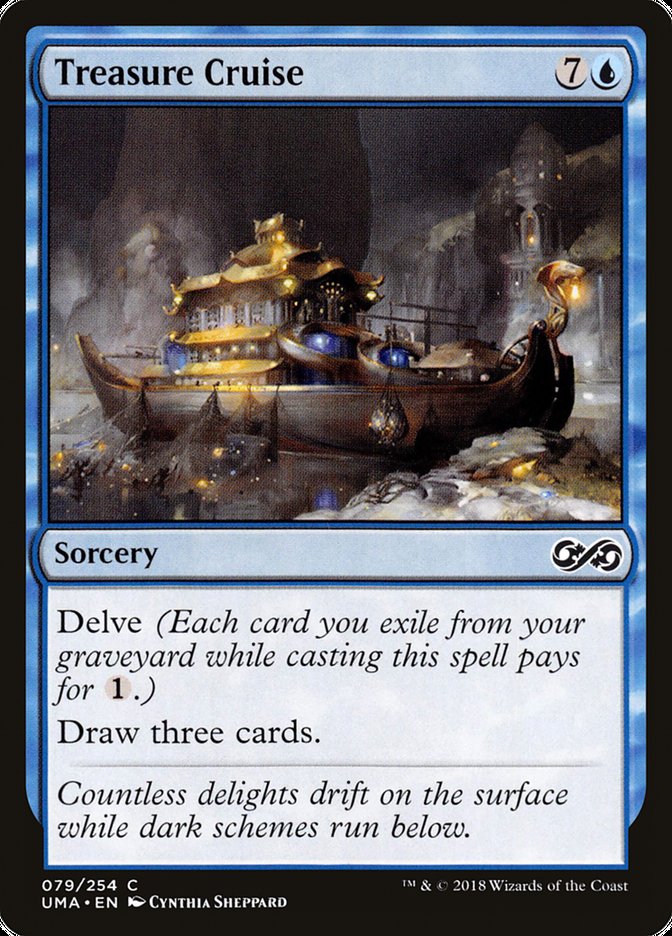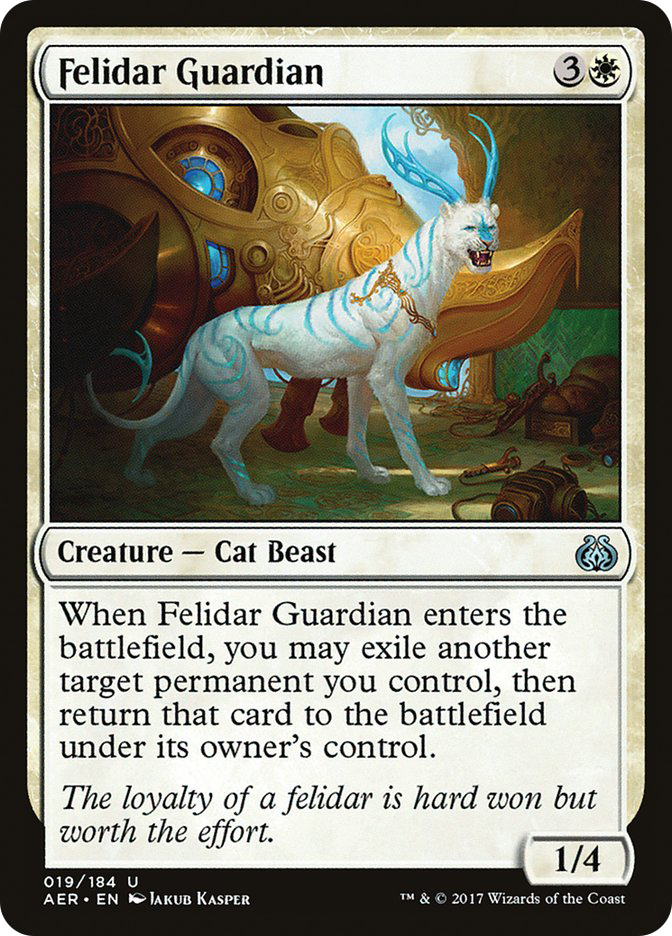The first couple months of Pioneer will be wild. The only cards banned currently are the Khans of Tarkir fetchlands, but Aaron Forsythe has said that Wizards intends to ban cards aggressively in these opening months of the format. Until this house-cleaning is complete, well…
These early days of the format threaten to be very degenerate, with cards that were formerly banned in Standard, or still are banned in Modern and Legacy, fighting for the spotlight. Just like how those clamouring for Hogaak, Arisen Necropolis or Faithless Looting to get banned in Modern a couple of months ago should have been registering the deck all along, if you want to win and genuinely believe a card needs banning in Pioneer, then you should be playing it and trying to break it.
So, how do we figure out which cards we should be trying to break? The clearest starting point is looking at these cards that have already been banned elsewhere. There are certainly cards at risk of being hit with bans that fall outside of this test; most notably, I am very cautious of Mox Amber, considering that Kethis Combo was the best deck in the most recent Standard format and gains a ton of additional tools and new angles of attack in Pioneer. For the most part, though, this test of looking at previously banned cards should let us zone in on the cards most deserving of your attention. So, let’s go through this list, starting with the cards I can’t imagine getting banned and working up to the ones that will most likely be gone within the next month or two.
Going through this list, there are going to be two different types of card: those that are at their most powerful in small formats due to either raw power level or to pushing out other options, and those that are most powerful in larger formats where synergies allow them to be pushed to their fullest potential. Attune with Aether and Rogue Refiner, banned from the energy shell that built the backbone of Temur and Four-Colour Energy, are decidedly the former.
Parasitic mechanics like the energy mechanic are at their strongest in small formats. Every energy card you have in your deck gets that much better for every other energy card in your deck, and suddenly you find somewhere between twelve and sixteen spell slots already spoken for. With so many sets in Pioneer, the chance that the energy core is just the best way to build decks to such an oppressive extent is much less likely than it was in Standard because ultimately there are still only two sets that contain these energy cards.
In addition to this, a big part of the reason these cards were so popular was because the mana in that Standard format was quite bad, to the extent that you were pretty close to wanting Attune with Aether in your decks even before the energy bonus, but once you have the energy bonus you might as well play Harnessed Lightning, which means you may as well play Rogue Refiner to power up your kill spell, and so on. With so many different multicolour lands available to us in Pioneer, the mana in three-colour decks will already be quite good, which eats into at least a bit of the appeal of playing Attune with Aether.
From the same set of bannings as the energy cards, we have Ramunap Ruins and Rampaging Ferocidon. There is a very real chance that Mono-Red Aggro or even Gruul Aggro with Atarka’s Command ends up being too good. After all, there have been multiple Standard formats in the time period that Pioneer covers where Mono-Red has been the best deck, and suddenly all those toys get to play together.
Creatures (20)
- 4 Eidolon of the Great Revel
- 4 Monastery Swiftspear
- 4 Bomat Courier
- 4 Hazoret the Fervent
- 4 Rampaging Ferocidon
Lands (21)
Spells (19)

I built this list to be as big as possible in order to accommodate Rampaging Ferocidon, which is an appealing card in the early days of the format since it helps combat the Felidar Guardian combo decks. That said, Rampaging Ferocidon is now just another three-drop in a sea of good red three-drops, and you could just as easily end up wanting Goblin Rabblemaster, Goblin Chainwhirler, or no three-drops at all depending on how you build your red decks.
In addition, Ramunap Ruins is no longer the freeroll it once was since other lands are competing for those slots. If you end up running some of the Goblin token producers like Dragon Fodder or Goblin Rabblemaster, Castle Embereth plays very well alongside them. Meanwhile, splashes for Atarka’s Command in go-wide builds or Boros Charm in burn-heavy builds could end up making it hard to fit the full four Ramunap Ruins into your lists too.
Much like Ramunap Ruins and Rampaging Ferocidon, Reflector Mage was also banned largely because of the cards that surrounded it during its time in Standard. Reflector Mage played a key role in decks featuring Rally the Ancestors, and then later Bant Company, such that by the time that Azorius Flash was dominating the format people were very fed up with the card. In addition to this, Wizards of the Coast didn’t want to take the risk of the banning of Smuggler’s Copter not being enough to weaken Azorius Flash, and with Felidar Guardian’s release looming too there was a hesitance to let Reflector Mage be legal alongside it.
Creatures (31)
- 4 Boros Elite
- 4 Soldier of the Pantheon
- 3 Kytheon, Hero of Akros
- 4 Reflector Mage
- 4 Thraben Inspector
- 4 Thalia's Lieutenant
- 3 Dauntless Bodyguard
- 3 Venerated Loxodon
- 2 Charming Prince
Planeswalkers (2)
Lands (20)
Spells (7)

Reflector Mage is certainly a very strong card and will see a lot of play but it’s not the sort of card that I expect will end up on the Pioneer Banned and Restricted list. Instead, if Rally the Ancestors or Collected Company decks do end up being too good, I expect those namesake cards to get hit due to the risks created by cards like these in non-rotating formats where every new creature printed has the risk of making those cards broken all over again.
This is our first example of a card that was banned because of the nature of non-rotating formats to increasingly push the power level of synergistic cards. In particular with Deathrite Shaman, the presence of fetchlands in Modern and Legacy made it way too efficient at providing mana on Turn 2 whilst also breaking the colour pie since you could cast this particular mana creature with black mana. The Swiss Army knife nature of Deathrite Shaman is appealing, as is its defensive body and the incidental graveyard hate it provides, but it was always the mana generation ability that pushed this card over the top.
With fetchlands explicitly banned from the get-go, Deathrite Shaman is going to feel a lot fairer than you’re perhaps used to. We still have Fabled Passage, but your own Passages aren’t going to get you to that precious third mana via Deathrite on Turn 2, and for the most part you’ll have to work to make this card’s mana generation function consistently. All this means is that Deathrite Shaman will still see play, but as long as WotC is careful not to allow too much in the way of fetchland-style designs in to the format, it won’t be the format-warping, colour pie-breaking menace that we remember.
Our most recent banned card from Standard is also most likely safe, though this is the sort of tool we’ve never really seen in a dedicated ramp deck before and I’m very curious to see how casting Hour of Promise to go find Field of the Dead plays in practice. Ramping into Ulamog, the Ceaseless Hunger or Emrakul, the Promised End used to be quite potent against control strategies, and you can certainly imagine a world in which Field of the Dead alongside these threats pushes control decks out of the format in an unhealthy way. That said, this seems unlikely, and if it does happen, I imagine it will be more the fault of Emrakul than anything else.
This is the first card on the list that I could realistically see ending up banned, though it has a lot of things pushing against it. Aetherworks Marvel never had to exist in a Standard format where cards like Thoughtsieze or Pithing Needle were legal, and even just removing Marvel from the battlefield was challenging to do efficiently for much of its legality. On top of that, the fun police pairing of Teferi, Time Raveler and Oko, Thief of Crowns respectively stop Marvel from functioning or turn a Marvel that failed to hit something good on its first spin into an Elk.
Creatures (15)
Planeswalkers (5)
Lands (22)
Spells (18)

Another problem on top of that, as we can see in the above decklist, is that so many slots are spoken for because you need ways to actually make energy to fuel the Marvel with. As I said earlier, by relying on a parasitic mechanic like energy it’s very hard to fully take advantage of the massive card pool that Pioneer offers. I could certainly imagine the card simply being banned just because it doesn’t make for enjoyable play experiences, and having seen Aetherworks Marvel loom over Standard once before, it’s not hard to imagine it being too good as Turn 4 Emrakul, the Promised Ends and Ulamog, the Ceaseless Hungers are soul-crushing and game-ending. There’s a very real chance though that the decks built around Marvel end up being just fine role-players rather than anything oppressive considering the high power level of the format and the answers that exist to fight back.
If Aetherworks Marvel decks do become a problem, it’s likely the real culprit is Emrakul, the Promised End. Even outside of its interactions with Marvel, Emrakul posed a lot of problems when it was legal. Most notably it was just the best end-game you could build your deck towards, but it’s not clear that is really the case anymore as there are cards like Nexus of Fate that can go much bigger. On top of that, Emrakul never had to exist in a format with powerful graveyard hate along the lines of Rest in Peace, Leyline of the Void, or Scavenging Ooze, and the presence of those cards gives opposing decks much more ability to fight back against Emrakul. I’m more inclined to think the card will be banned than not, but this one could go either way.
The big question that will decide the fate of these powerful delve spells is how good they are without fetchlands in the format and with very limited options regarding one-mana cantrips to play alongside them. Treasure Cruise and Dig Through Time are the go-to examples of cards that get more powerful as formats become larger because there will be more tools available to you that incidentally fuel them. This is why these cards were powerful but not really problematic when they were legal in Standard but were dramatically format-warping in Legacy.
For those who haven’t had the chance to play with these two powerful delve spells before, Treasure Cruise is at its best in decks that just want to proactively do as much stuff as possible, throwing resources at their opponents until they submit. This is due to a combination of the card playing at sorcery speed and so asking that you tap out, and also due to the fact it gives you more raw resources than Dig but no real selection on what those resources are.
Dig Through Time is the opposite. It asks that you play at instant speed so that it can play nicely alongside other possible instants; if your opponent does something you need to respond to, you can do so, and if not, then you get to Dig on their end step. It also rewards control decks and combo decks with the high degree of card selection it offers since control decks need specific answers and combo decks are looking for those final combo pieces.
Planeswalkers (5)
Lands (26)
Spells (29)

All this means if you’re looking to abuse Dig Through Time, find a good combo or control shell for it. A Nexus of Fate deck was my first thought as far as combo shells go since those decks were already playing Drawn from Dreams back in the previous Standard format. Dig Through Time’s instant-speed nature plays really nicely with Wilderness Reclamation and means you don’t even need that big a discount on the card to cast it, whilst Censor serves the dual role here of either interacting early or cycling later to fuel your next Dig.
Creatures (15)
Lands (19)
Spells (26)

If you’re looking for a more degenerate home for Treasure Cruise, something involving Jeskai Ascendency may work since that card is so effective at filling your graveyard as you combo off, but instead I’ve gone with this hyper-aggressive Izzet Prowess build which epitomises what I think of when I think of a Treasure Cruise deck: raw efficiency, hurling resources across the table, and the ability to sideboard in some cheap counterspells like Spell Pierce once you know what interaction suits the matchup best.
It’s hard to imagine, if this card remains legal, that it doesn’t end up being the most-played spell in the format in a few weeks’ time. This is exactly what got it banned in Kaladesh Standard only a few months after its release. Smuggler’s Copter is easy to slot into any deck that is interested in attacking whilst both the evasion and card selection the card offers let your aggressive decks play to the long game in a way that very few other two-drops can enable.
If you’re considering including a two-drop in your aggressive deck, ask yourself if that card is either highly synergistic with what the rest of your aggressive deck is doing or more powerful than Smuggler’s Copter. If too many two-drops end up failing this test, it’s likely Smuggler’s Copter will have to leave us due to its effect on homogenising deck construction. I would be very surprised if this card is legal for the first Players Tour event of next year.
Finally, we come to the top cat itself. It’s going to take some work to figure out the best way to build around the Saheeli Rai and Felidar Guardian Copy Cat combo as there are a lot of different ways to approach it, but I struggle to imagine that this combo won’t end up getting hit with a ban once lists are tuned.
A lot of what makes decks featuring this combo problematic is that you force people to play cheap removal in case you draw in to the combo, such that when a deck like this is good it naturally limits what the rest of the format can consist of.
Creatures (7)
Planeswalkers (13)
- 2 Jace, Architect of Thought
- 2 Elspeth, Sun's Champion
- 3 Saheeli Rai
- 2 Teferi, Hero of Dominaria
- 2 Teferi, Time Raveler
- 2 Narset, Parter of Veils
Lands (26)
Spells (14)

I’ve seen a bunch of builds of this archetype already, some leaning on the energy shell whilst others try to play a slower, more interactive game as a Jeskai Control deck. This list tries to mix things up a bit, with Fires of Invention allowing you to threaten the combo at any moment even if you only have four lands on the battlefield. The big downside to this is that you don’t get to play either of the potent delve spells mentioned earlier in this article since they’re so hard to cast with a Fires of Invention on the battlefield, but the upside is that you get to attack from multiple degenerate angles at once such that your opponent isn’t going to set you back that far by just holding open interaction for your combo. In fact, a lot of removal spells are bad against this build except specifically when it comes to interacting with your combo, such that there will be awkward tension for opponents when trying to sideboard against you.
This list is a pretty rough sketch, but the thought of getting to experiment with Fires of Invention in this sort of space in Pioneer excites me. The card should work very well alongside creature-lands, and being able to use Granted to easily fetch and surge Crush of Tentacles the turn after you get your Fires of Invention onto the battlefield sounds potent also. This manabase is likely too cute, but there are so many different lands in Standard that do functionally very similar things that I was keen to see how easy it would be to support Field of the Dead outside of a dedicated ramp deck.
No one knows exactly where this Banned List is going to settle in a few months’ time, but hopefully this gives you some insight into what cards to focus your testing on whilst they are still legal. For those looking to explore this format, it’s going to be an exciting few months!





